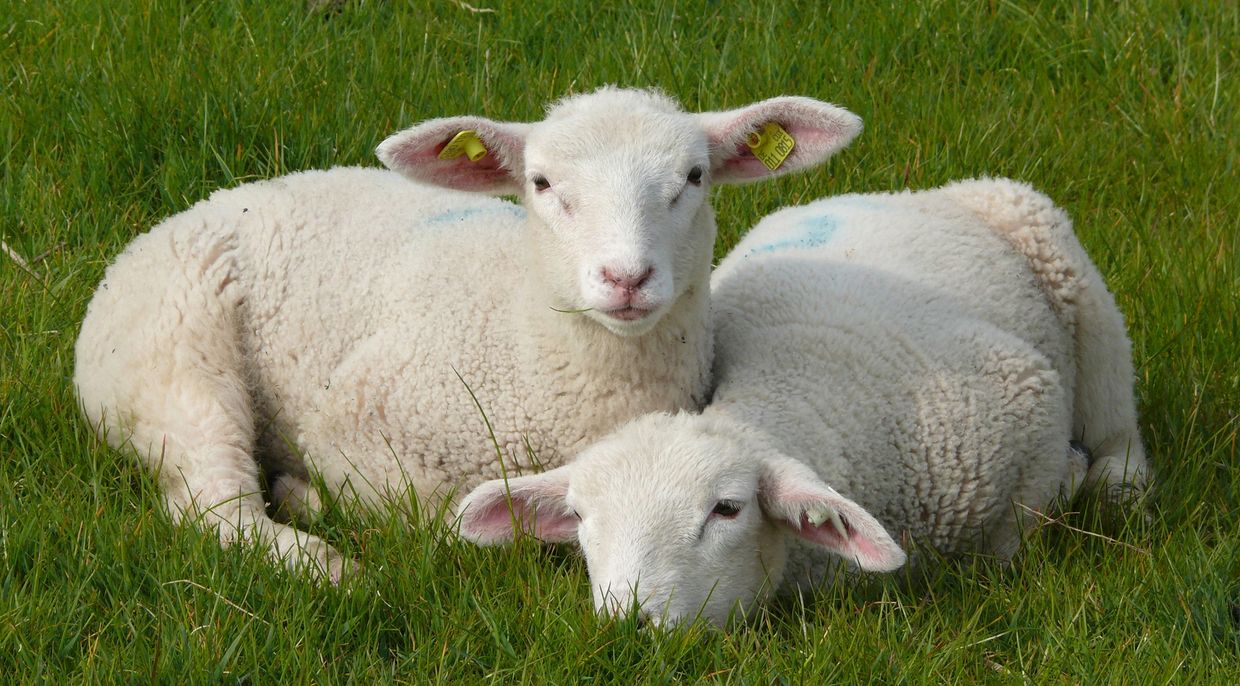
The St Croix Breed
Background:
The St Croix is a breed of sheep native to the U.S. Virgin Islands and named for the island of Saint Croix. They are often also called Virgin Island White because those that were imported into North America were selected for white coloration. On the Island of St. Croix, they come in shades of brown, white and black. The breed is believed to be descended from North African sheep that were brought to the Caribbean and are a breed of hair sheep which does not grow wool. The St Croix is a hardy tropical breed known for its parasite resistance and is raised primarily for meat production. The St Croix breed is the foundation breed for Katahdin and Royal White breeds.
Characteristics:
Most St. Croix are completely white with others being solid tan, brown, black or white with brown or black spots. Ewes and rams are polled (no horns), and rams have a large throat ruff. Mature ewes weigh 150 lbs. and rams weigh up to 200 lbs. Birth weights average 6 to 7 lbs. Tails do not need docking.
Adaptability:
St. Croix sheep can live in a wide variety of climates. They are well adapted to the hot humid climate of the tropics and can survive in cold temperatures. Their hair coat lets them tolerate the heat, and they grow a thick wool coat in cold winter temperatures. Their coat sheds water. These sheep are known as 'Parasitic Pasture Vacuums' for their ability to clear a pasture of parasites reducing the need to worm sheep. St. Croix also show resistance to hoof rot.
Reproduction:
Ewes and rams hit puberty just after 3 months old. Lambs should be separated from their mother after 60 days to prevent impregnation of the ewe. At the age of 7–8 months, ewe lambs have their first estrus cycle. Ewes will ovulate during all months of the year, not following a seasonal breeding period like most sheep. Ewes can lamb at 12 months of age and if well managed, can have two lamb crops in a year, sometimes three in two years. One to four lambs in one lamb crop can be expected, with twins being most common. St. Croix sheep have a high lamb survivability, and the ewes are instinctive mothers, usually not requiring much help. Ewes generally produce plenty of milk for their lambs.
Milking:
St. Croix ewes produce ample quantities of milk high in butterfat. In some regions of the United States, ewes are being milked for cheese production.
Growth:
Lambs finish with a minimal amount of fat and have a small bone to fat ratio. Meat is lean and without the tallow taste, as well as being naturally low in cholesterol. Flavor and aroma is described as mild. Meat is judged as having good flavor, juiciness, and tenderness. Lambs have a slightly slower growing rate than other sheep breeds.
Temperament:
St. Croix are easy to handle livestock. They are active without showing signs of being wild or flighty. Charging and head butting is a less common behavior in rams. Sheep tend to be comfortable around people. St. Croix have a good herding instinct and are often used to train herding dogs.
Other:
St. Croix sheep are both grazers and browsers. They are not selective eaters. These sheep have been used for brush and weed control due to their preference for weeds. St. Croix sheep are easily managed and are often referred to as "easy keepers". The breed is an excellent choice for a small farm with just a few sheep or large-scale meat production.
*Adapted from Wikipedia, the free encyclopedia
This website uses cookies.
We use cookies to analyze website traffic and optimize your website experience. By accepting our use of cookies, your data will be aggregated with all other user data.
